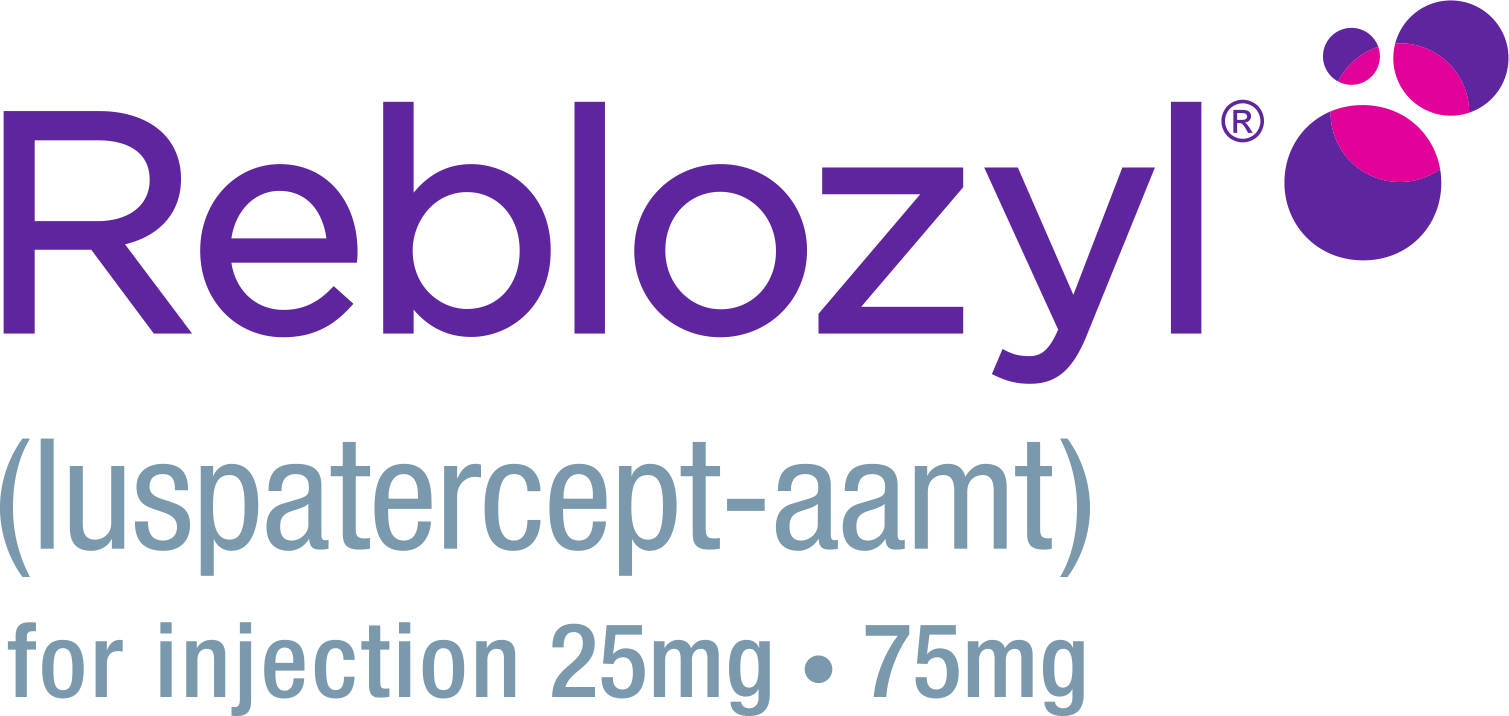THE NEED FOR REBLOZYL: MECHANISM OF ACTION
REBLOZYL helps address ineffective erythropoiesis1
Impaired erythroid maturation contributes to ineffective erythropoiesis, resulting in low production of red blood cells and anemia2,3
Select a graphic view or text view to explore content

For illustrative purposes only.
Early-stage erythropoiesis
Endogenous erythropoietin regulates proliferaton.4
Hematopoietic stem cell progresses to burst-forming unit erythroid, which progresses to colony-forming unit erythroid, which progresses to proerythroblast.
Impaired erythroid maturation in late-stage erythropoiesis
Basophilic erythroblast progresses to polychromatic erythroblast, which progresses to orthochromatic erythroblast, which progresses to erticulocyte, which progresses to red blood cell.
In late-stage erythropoiesis, select transforming growth (TGF-β) superfamily ligands help regulate maturation. TGF-β superfamily signaling through Smad2/3 is abnormally high in diseases characterized by ineffective erythropoiesis, which leads to impaired erythroid maturation of red blood cells.5-7
REBLOZYL restores erythropoiesis by increasing the number and improving the quality of mature RBCs as observed in preclinical studies1
Select a graphic view or text view to explore content

EARLY-STAGE ERYTHROPOIESIS
Endogenous erythropoietin regulates proliferation4
LATE-STAGE ERYTHROPOIESIS
REBLOZYL regulates erythroid maturation REBLOZYL binds several TGF-β superfamily ligands, thereby diminishing Smad2/3 signaling and increasing the number of mature RBCs1,6,7
For illustrative purposes only.
EARLY-STAGE ERYTHROPOIESIS
Endogenous erythropoietin regulates proliferation4
LATE-STAGE ERYTHROPOIESIS
REBLOZYL regulates erythroid maturation
REBLOZYL binds several TGF-β superfamily ligands, thereby diminishing Smad 2/3 signaling and increasing the number of mature RBCs1,6,7
In preclinical models, REBLOZYL improved Hgb levels, RBC morphology, and other hematology parameters* associated with ineffective erythropoiesis1,6
*Other hematology parameters include reducing oxidative stress in erythrocytes, reducing accumulation of α-globin aggregates in erythrocyte membranes, and improving RBC lifespan.
BFU-E=burst-forming unit erythroid; CFU-E=colony-forming unit erythroid; Hgb=hemoglobin; HSC=hematopoietic stem cell; RBC=red blood cell; TGF-β=transforming growth factor beta.
Learn about the efficacy of REBLOZYL
References: 1. REBLOZYL [US Prescribing Information]. Summit, NJ: Celgene Corporation; 2023. 2. Liang R, Ghaffari S. Advances in understanding the mechanisms of erythropoiesis in homeostasis and disease. Br J Haematol. 2016;174(5):661-673. 3. Ponka P, Koury MJ, Sheftel AD. Erythropoiesis, hemoglobin synthesis, and erythroid mitochondrial iron homeostasis. In: Ferreira GC, ed. Handbook of Porphyrin Science: With Applications to Chemistry, Physics, Materials Science, Engineering, Biology and Medicine. Vol 27. Singapore: World Scientific Publishing Co.; 2014. 4. Lodish H, Flygare J, Chou S. From stem cell to erythroblast: regulation of red cell production at multiple levels by multiple hormones. IUBMB Life. 2010;62(7):492-496. 5. Fortunel NO, Hatzfeld A, Hatzfeld JA. Transforming growth factor-β: pleiotropic role in the regulation of hematopoiesis. Blood. 2000;96(6):2022-2036. 6. Suragani RN, Cadena SM, Cawley SM, et al. Transforming growth factor-β superfamily ligand trap ACE-536 corrects anemia by promoting late-stage erythropoiesis. Nat Med. 2014;20(4):408-414. 7. Attie KM, Allison MJ, McClure T, et al. A phase 1 study of ACE-536, a regulator of erythroid differentiation, in healthy volunteers. Am J Hematol. 2014;89(7):766-770.

